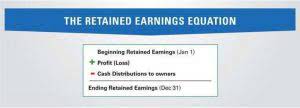
Ifapproval is not granted, a nonresident individual is required toapportion his or her income based upon the above mentioned three factorformula. New York has a statewide sales tax of 4%, with local jurisdictions adding additional rates, reaching up to 8.875% in areas like New York City. Businesses selling tangible personal property, certain services, and digital goods must collect and remit sales tax. Registration is required through the New York State Department of Taxation and Finance. For taxpayers in the state of New York, there’s New York City, and then there’s everywhere else. The state’s tax system combines a relatively payroll low sales tax rate with an income tax system that leans heavily on high earners.
Other income tax considerations in New York state

They tax your NY sourced wages based on the percentage of your wages that are earned from NY. For partnerships, New York City has a flat tax rate on net income of 4%. This is known as new york income factor the New York City Unincorporated Business Tax (“UBT”).

Revenue agents who conduct audits lead IRS job losses

TurboTax will not display the allocated amount on the wage allocation screen but will transfer the info to Form IT-203 in the New York State amount column. My W2 lists the corporate HQ in NY for my employer, but my work required me to work from a warehouse on the ground in Florida. By granting them a profits interest, entities taxed as partnerships can reward employees with equity.
- The receipts factor used in determining a nonresident individual’sbusiness apportionment percentage can vary greatly from that used bycorporations.
- Out-of-state S corporation shareholders with no physical contact with the state will find themselves subject to tax in New York.
- For self-employed individuals, income allocation depends on the proportion of work performed in the state.
- S corporations generally apportion income using a single-receipts factor, which remains unchanged and is identical to the C corporation requirements.
- Under this fact pattern, a corporation would not have anyNew York State sourced receipts because the destination of itsmerchandise was to customers located outside of New York.
Nebraska State Income Tax in 2025: A Guide
In summary, New York corporate tax reform will significantly affect S corporations. Out-of-state S corporation shareholders with no physical contact with the state will find themselves subject to tax in New York. Depending on the taxpayer’s business, the taxpayer may also encounter significant complexities in determining whether the $1 million in receipts threshold for nexus has been met. Taxpayers may find themselves in the position of having to ask their customers where the “benefit” of their services is received in order to determine appropriate sourcing. If the location where the benefit of services is received cannot be easily identified, significant further analysis may be necessary.
- Once New YorkState receipts are determined, the sales factor is double-weighted(single-weighted for New York State S corporations) in calculating theirbusiness apportionment factor.
- The law adopts unitary combined reporting and elective combined reporting for certain groups of corporations.
- These taxes are due at the time of transfer and must be reported on Form TP-584.
- However, thedifference lies in what constitutes a receipt from New York Statesources.
- Forms IT-204.1 and IT-204-CP that were filed previously, for tax years beginning on or after January 1, 2015, must be amended if needed, to reflect this rule.
- Indeed, the number declined by just over 4,000 in the following year.
- Thus, states can still establish nexus even if the taxpayer does not meet the factor presence thresholds.
Tax Tips

In 2024, the department issued refunds to 7.3 million taxpayers for tax year 2023 for a total of $14.2 billion. New York enforces tax compliance through audits of individuals and businesses. Audits can be triggered randomly or by red flags such as discrepancies between state and federal returns, high deductions relative to income, or residency concerns. Taxpayers must provide documentation supporting their reported income and deductions, and failure to do so can result in adjustments and additional taxes owed. A tax credit reduces your income taxes by the full amount of the credit. So if you owe $5,000 in taxes and are eligible for a tax credit of $500, you only need to pay $4,500 total.
For purposes of determining nexus, is the deriving receipts within New York State test calculated annually?
- However, the share of filers reporting these gains is relatively stable at around 20% of all returns.
- Preliminary 2023 data has already matched 2022 and is likely to increase as the department continues to review and process tax year 2023 returns.
- We’ve got details on average mortgage rates and other information about getting a mortgage in the Empire State.
- Bean had nexus with the state since its gross receipts met the state’s threshold (i.e., greater than $500,000).14 The fight is not over yet, asL.L.
- For more information on New York State’s sales tax see Sales tax administrative information.
For the 2024 tax year (filed in 2025), New York City has four tax brackets for the 2024 tax year, ranging from 3.078% to 3.876%. New York offers a standard deduction to reduce your taxable income, with different amounts based on your filing status. The standard deduction is a blanket amount you can use to reduce your taxable income based on your filing status. In the next section, we’ll break down the New York State tax rate schedules, providing detailed tables for those with Accounting for Technology Companies an AGI of $107,650 or less and a taxable income of $65,000 or more. If your taxable income doesn’t fall within these ranges, you’ll need to refer to the NYS tax table or computation worksheet.

Have Questions About Your Taxes?
Taxpayers filed almost 10.8 million personal income tax returns in New York State in tax year 2023, down from the peak of almost 11 million personal income tax returns filed for tax year 2020 when the COVID-19 pandemic drove an expansion in government relief programs. New York has a progressive personal income tax, with rates ranging from 4% to 10.9%, the highest applying to those earning over $25 million. New York City residents also face a separate city income tax between 3.078% and 3.876%. Residency status is crucial in determining tax liability—full-year residents must report all income, while part-year residents and nonresidents are taxed only on New York-sourced income.

